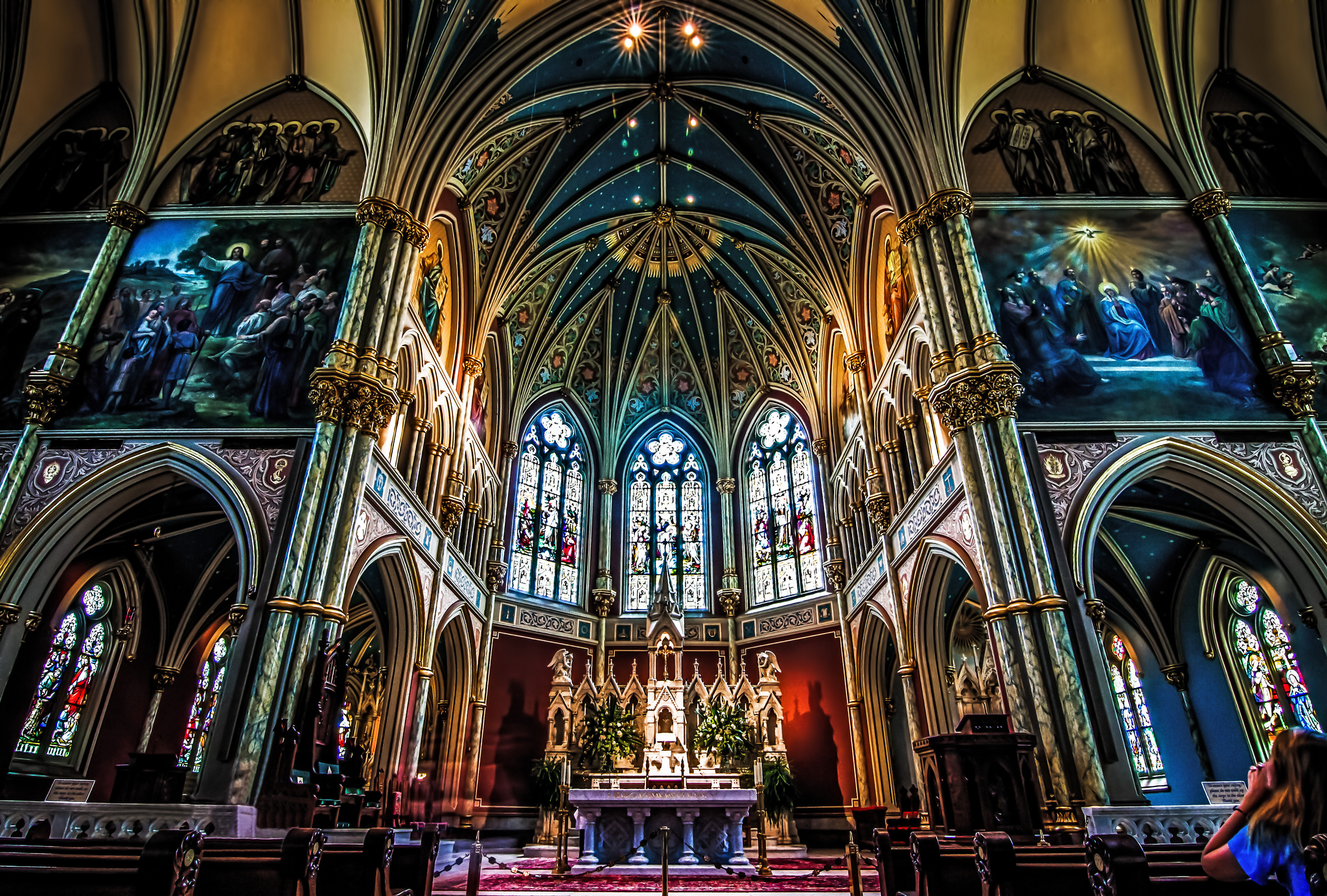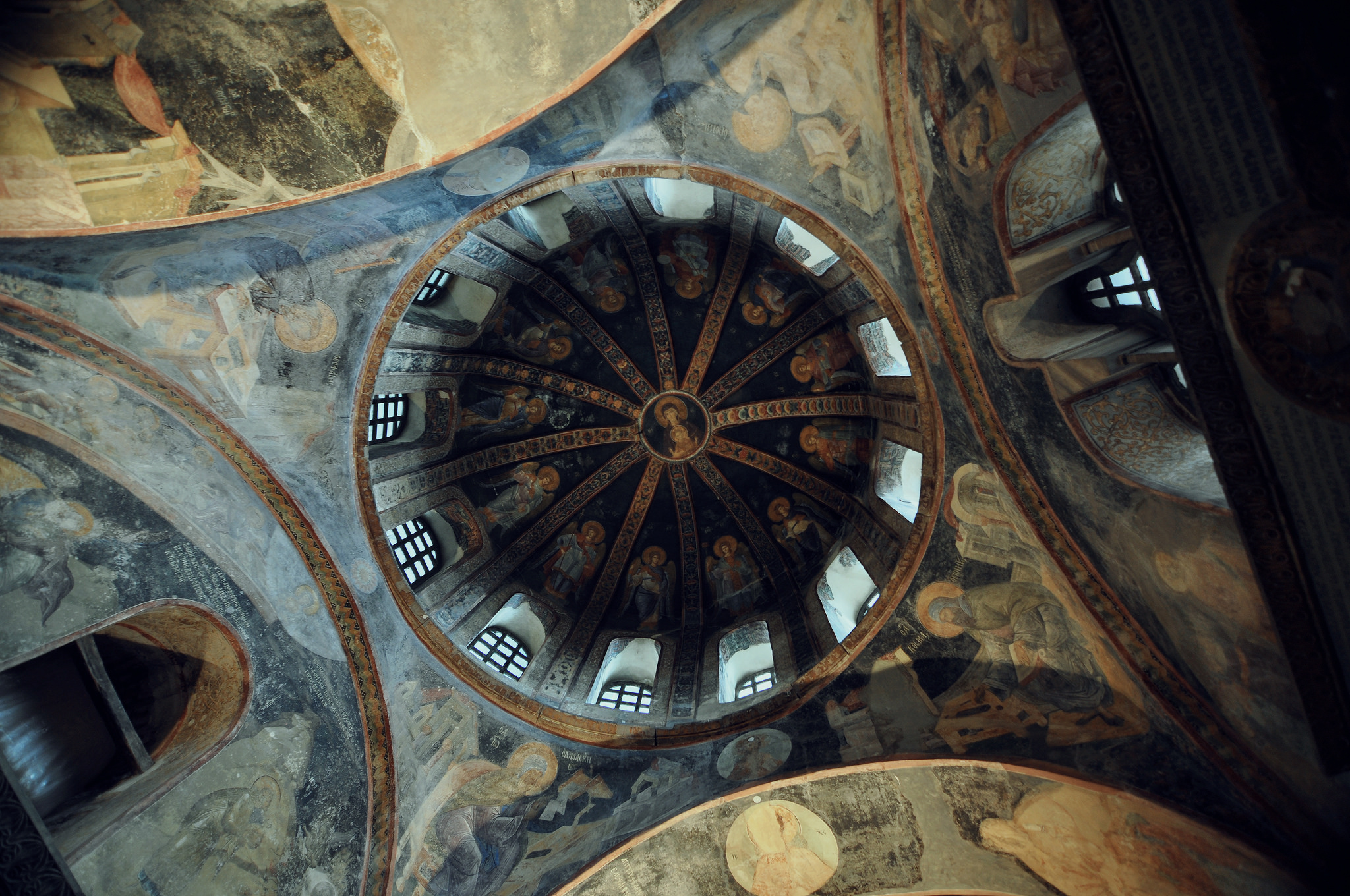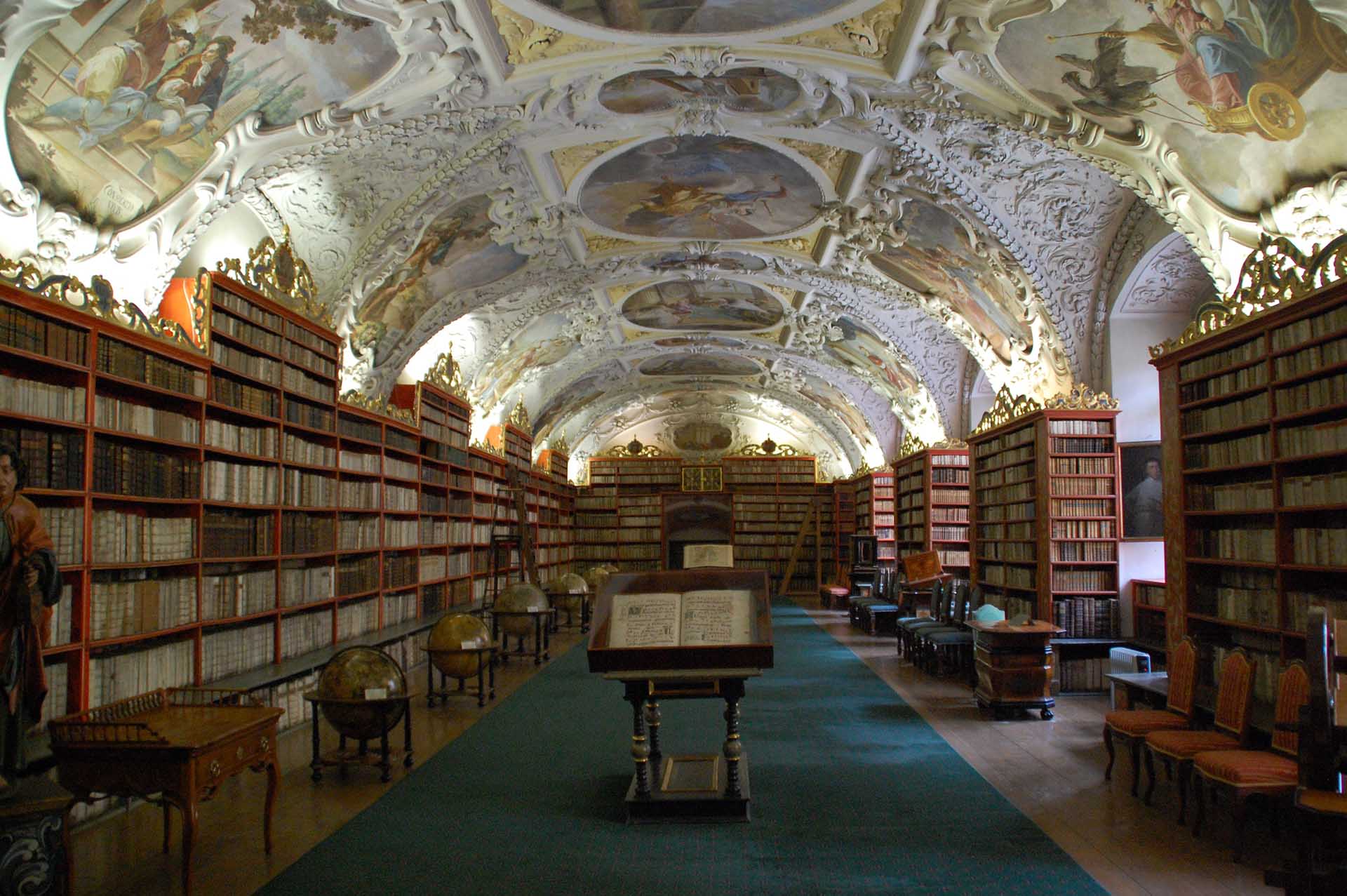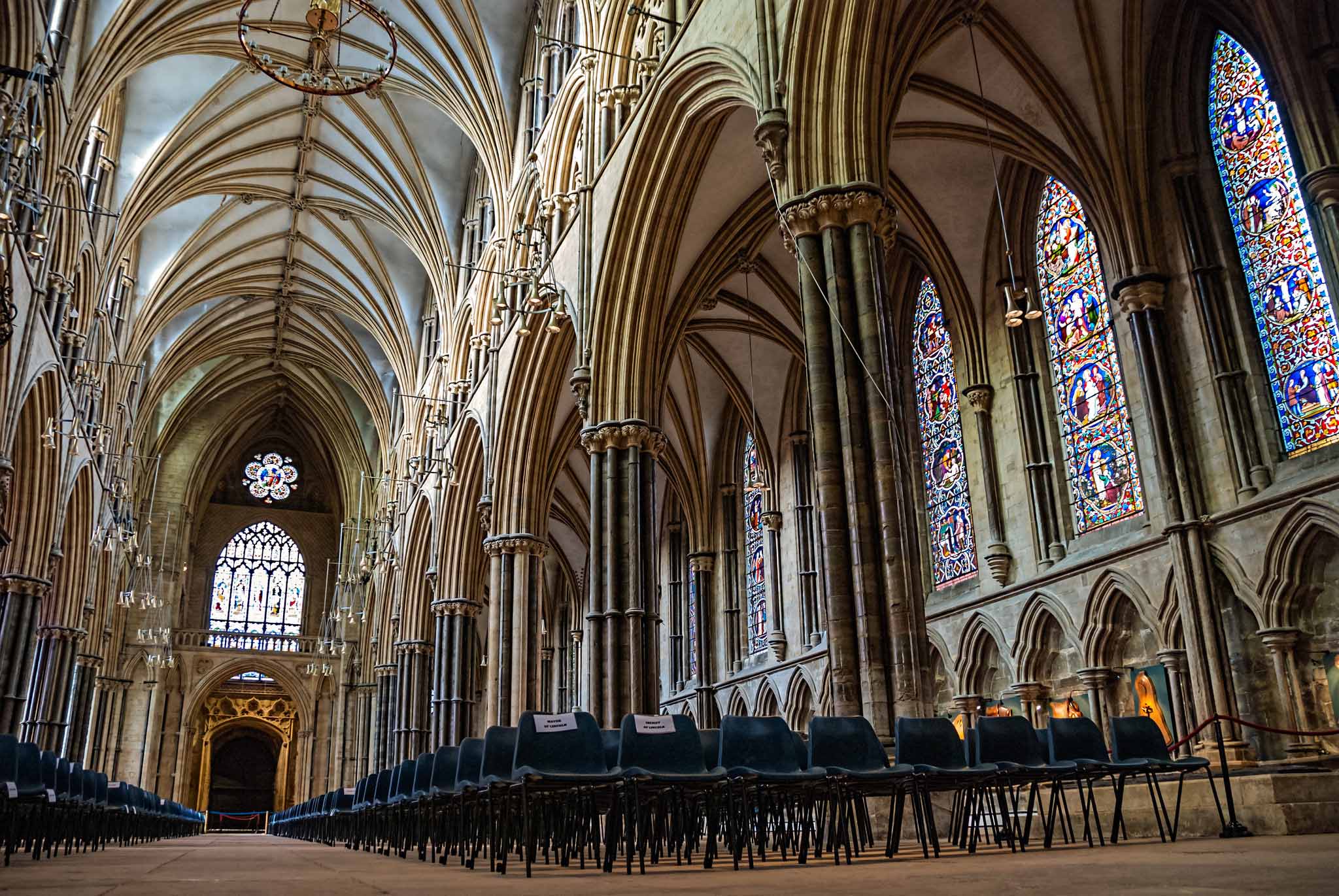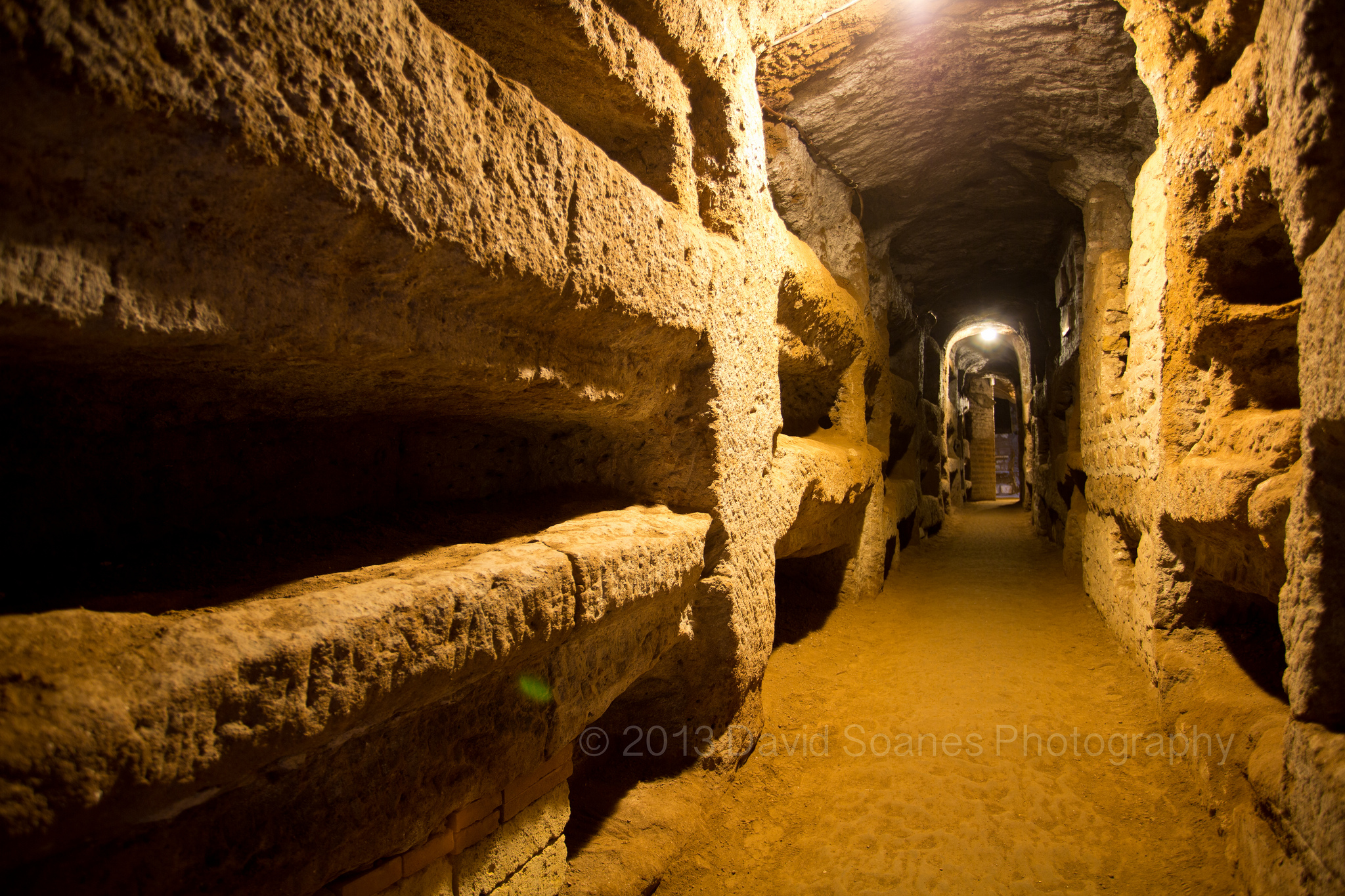Three Attributes, Four Marks
© Copyright 2009, T. Stanfill Benns (None of what appears below — in whole or in part — may be used without the express and written permission of the author.)
All Catholics know or should know that the Church is identified by three attributes and four marks. The four marks can be found in the various creeds and the three attributes are qualifying requirements that must precede the marks. Those who insist their group possesses these marks are ignoring the attributes, when the marks cannot exist without the attributes. Mgr. Van Noort, listed as an approved theologian by the much-respected Rev. J. C. Fenton, tells us that close is not good enough; the Church must be identical in all its component parts to the Church Christ established, as He established it and intended it to exist. Those claiming they may be counted as apostolic when they are not true successors of the Apostles ignore the infallible teaching of Pope Pius IX: If one mark is missing, then all the marks are missing. The Catholic Encyclopedia says this is especially true of the mark of apostolicity, which should be clear from the nature of the requisite attributes. Traditional “theologians” use the argument that the Church cannot not exist; ergo their priests and bishops are it. While it is true that the Church will exist unto the consummation, we must understand this only in the sense in which Christ Himself demonstrated it in His actions while on earth and taught it to the Apostles.
To effect a more complete understanding of the attributes and their attendant properties, Henry Cardinal Manning, in his treatise, “The Holy Ghost and the Church,” breaks down the Church’s hierarchical makeup as follows.
“From the indissoluble union of the Holy Spirit with the Church flows the three properties of Unity, Visibleness and Perpetuity,” and the unity that Manning speaks of here is a higher unity than that which is included as a mark of the Church. This unity “is the intrinsic unity of intelligence, will and organization, generated from within by the unity of the Person and the operation of the Holy Ghost. The property of Unity is not extrinsic and constitutional, but intrinsic and essential. Next the property of Visibleness is a necessary consequence of the constitution of a body or a society of men bound by public laws of worship and practice. Lastly, Perpetuity is a necessary consequence of the soul with the body, of the Spirit with the Church.
“From the same indissoluble union flow next the endowments [attributes] of the Church; namely, Indefectibility in life, and duration, Infallibility in teaching and Authority in governing the flock of Jesus Christ. These are effects springing from the same substantial union of the Holy Spirit with the Church and reside by an intrinsic necessity in the mystical body,” (“Cabinet of Catholic Information”).
For the sake of argument let’s pretend that Traditionalists possess all the marks except apostolicity, since even Trad priests and bishops have admitted they cannot and do not possess ordinary or delegated jurisdiction. Even if this were the case, Trads could not pretend to possess the four marks for two reasons: 1) they can exist only if the three attributes, authority, infallibility and indefectibility first exist, i.e., the papacy — see Rev. Kinkead’s Baltimore Catechism #3, Q. & A # 520; and 2) Pope Pius IX taught in 1864 that if even one mark of the Church was lacking, She could not exist at all. “The true Church of Jesus Christ is constituted by Divine authority and is known by four notes. We lay down these notes as matters of faith in the Creed. And any one of these notes is so joined to the others that it cannot be separated from them…Therefore the Catholic Church is one by a conspicuous and perfect unity of the whole world and of all peoples, by that unity indeed whose principle, root, and never-failing source is in the supreme authority and ‘greater sovereignty’ of St. Peter …and of his successors…” (DZ 1687 — letter to the Bishops of England from the Holy Office on the dangers of reunionism).
In his “The Vatican Decrees and Their Bearing on Civil Allegiance,” Manning elaborates further on the endowment of Authority concerning the distinction made by the Church between spiritual and temporal power. According to Cardinal Tarquini: “The Civil Society under the government of the Civil Magistrate exerts its power to secure the temporal happiness of men, and under the government of the Church, to secure eternal life; and in such wise that eternal life be acknowledged to be the last and supreme end to which temporal happiness and the whole temporal life is subordinate; because if any man do not acknowledge this, he neither belongs to the Catholic Church nor may he call Himself Catholic. Such, then, is the true notion of the Civil Society of Catholics,” (end of Cardinal Tarquini quote). Manning continues: “Dr. Dollinger’s interpretation, then, is strictly correct — namely, ‘It was therefore,’ he says, ‘the indirect power of the Church over the temporal power of Kings which the pope defended in [Unam Sanctam and other bulls];’ but that power of the pope is itself Spiritual…Suarez says that the opinions which gives to the Pontiff direct temporal power over all the world is false. He then gives as the true opinion that which has been affirmed — namely, that the Pontiff has not direct temporal power, except in those states in which he is Temporal Prince; but that he has a spiritual power indirectly over temporal things, insofar as the affect the salvation of men or involve sin,” (all emph. within these quotes is Manning’s).
Manning then explains the source of the confusion among so many concerning the word “temporal.” The word Temporal was used in two senses. It was used to signify the power of Civil Rulers in the order of nature. And in this sense the Church has never claimed it for its head. It was used also to signify the spiritual power of the Pontiff when incident indirectly upon temporal things.” St. Robert Bellarmine, Manning says, once responded to the Englishman Barclay that “The common opinion of theologians [and later canonists] affirms that the power of the Supreme Pontiff, as Vicar of Christ, is strictly spiritual in itself; but that nevertheless, he may, by the same, dispose of temporal things so that they may be ordered to spiritual ends,’” (“De Poteste Summi Pontificus”). So the two great theologians, Bellarmine and Suarez agree, and the Church teaches, that the power of the pope over Catholic subjects governed by Catholic rulers alone was direct; but when circumstances changed and Catholic subjects fell under the sway of non-Catholic rulers, then the power became indirect only. This is the endowment of temporal Authority as taught and understood by the Church as opposed to spiritual Authority.
Concerning the definition of infallibility at the Vatican Council, Cardinal Manning, who took a vow to see that the doctrine was defined, says they are contained in the following six points:
1. It defines the meaning of the well-known phrase loquens ex cathedra; that is, speaking from the seat or place, or with the authority of, the supreme teacher of all Christians, and binding the assent of the Universal Church.
2. The subject matter of his infallible teaching [is], namely, the doctrine of faith and morals.
3. The efficient cause of infallibility…is the Divine assistance promised to Peter, and in Peter to his successors.
4. The act to which this Divine assistance is attached [is], namely, the defining of doctrines of faith and morals.
5. This infallible authority is limited in its extension to the doctrinal office of the Church.
6. The dogmatic value of the definitions ex cathedra [is]…that they are in themselves irreformable, because in themselves infallible, and not because the Church, or any part or member of the Church, should assent to them.
“The Vatican Council has defined that the pope, speaking ex cathedra, is infallible: this definition, by retrospective action, makes all pontifical acts infallible…and by prospective action, will make all similar acts in future binding upon the conscience.”
We now return to Manning’s “The Holy Ghost and the Church,” for an expanded explanation of the nature of ex cathedra pronouncements. He describes as the basis for divine certainty and the rule of divine faith: “The voice of the living Church at this hour, declaring what God has revealed, which is no other than the voice of the Holy Spirit; Holy Scripture…the voice of the Holy Ghost [which] may generate acts of Divine faith; Tradition; the Decrees of General Councils and the definitions and decrees of Pontiffs, speaking ex cathedra, or as the head of the Church, and to the whole Church, whether by Bull, or Apostolic letters, or Encyclical or Brief, to many or to one person, undoubtedly emanate from a divine assistance and are infallible.” Here it seems the cardinal has included under ex cathedra acts those acts also of the ordinary magisterium.
Once again, from Manning’s “The Vatican Decrees and Their Bearing on Civil Allegiance”: “The Pontiff speaks infallibly when and only when he speaks as the pastor and doctor of all Christians. By this all acts of the Pontiffs as a private person, or a private doctor, or as a local bishop or as a sovereign of a state are excluded. In all these acts the Pontiff may be subject to error. In one and only one capacity he is exempt from error; that is when, as a teacher of the whole Church, he teaches the whole Church in things of faith and morals. The definition limits the range, or, to speak exactly, the object of Infallibility, to the doctrine of faith and morals. It excludes therefore all other matter whatsoever. The great commission or charter of the Church is, in the words of our Lord, ‘Go therefore and teach all nations…teaching them to observe all things whatsoever I have commanded you; and behold I am with you all days, even to the consummation of the world,’ (Matt. 28: 19, 20). In these words are contained five points:
1. The perpetuity and universality of the mission of the Church as the teacher of mankind.
2. The deposit of the Truth and of the Commandments, that is of the Divine Faith and Law entrusted to the Church.
3. The office of the Church as the sole interpreter of the Faith and of the Law.
4. That it has the sole Divine jurisdiction existing upon earth, in matters of salvation, over the reason and the will of man.
5. That in the discharge of this office, our Lord is with His Church always, and to the consummation of the world.
“In this deposit are truths and morals both of the natural and of the supernatural order; for the religious truths and morals of the natural order are taken up into the revelation of the order of grace, and form a part of the object of Infallibility…The object of Infallibility, therefore, is the whole revealed word of God; and all that is so in contact with revealed truth that without treating of it the Word of God could not be guarded, expounded, and defended. As, for instance, in declaring the Canon, and authenticity and true interpretation of Holy Scripture, and the like,” (emph. mine). He then adds that both the Second Council of Lyons, as well as the Council of Trent agree that if anything arises concerning a matter of faith and morals, only the Roman Pontiff can decide it.
Several points must be made here. First of all, St. Peter’s successor may speak from his chair (ex cathedra) in an ordinary or a solemn way, as Manning intimates. And this statement can be made in various types of documents, even in a brief, or as Pope Pius XII would later teach in “Humani Generis,” in an encyclical letter. “From the chair” would appear to have more to do with whether such a pronouncement treats of faith and morals, then, and less to do with its solemnity or lack thereof. This is a distinction not made clear today, since many wrongly teach that infallibility is a relatively rare occurrence. Secondly, many papal pronouncements became formally infallible when the Vatican Council issued its definition, something almost no one considers. Third, those things belonging to the natural law, Manning says, are themselves indirect objects of infallibility. And finally, if anyone questions the true meaning of any point on revelation, such as, for example, the necessity of jurisdiction for confessions, or a question concerning what constitutes true apostolic succession, it can only be decided authoritatively by a true pope, canonically elected.
And finally we arrive at the last attribute, Indefectibility, which is ably summarized by Rev. W. Wilmers S. J., an advisor at the Vatican Council. Wilmers wrote in his “Handbook of the Christian Religion: “The bishops in communion with the successor of St. Peter form one moral person with the Apostles who were gathered around St. Peter…If the Roman Catholic Church is apostolic because the body of its teachers and rulers lawfully succeeds the college of the Apostles, it follows that the assemblage of the faithful also is apostolic; for by the fact of the union with its lawful pastors who are the successors of the Apostles, it forms the Church Apostolic…Christ will therefore be all days…[until] the end of the human race on earth…without interruption to the end of time, with His Apostles in the discharge of that office with which He invested them…That promise of perpetual assistance was given to the Church in its rulers generally and consequently the rulers of the Church, i.e., its authority and consecration in the concrete, as they existed, will continue to the end of time…Neither can the Church lose the doctrine intrusted to it…The doctrine of Christ will remain in His Church forever…[it] is no less imperishable than the Church itself or its constitution and prerogatives.” Without union to true hierarchy there can be no apostolicity, except perhaps in desire.
Even if there were some bishops in the Traditionalist movement who could be proven beyond a reasonable doubt to have been validly ordained, they could never possess apostolic succession because they possess no spiritual authority bestowed in the manner the Church says such authority must be bestowed in order to transmit the power Christ gave to His Apostles as He intended. This is true because they must be both validly ordained and properly approved and assigned to a territory by a true Pope to possess this mark. As the Catholic Encyclopedia states under Apostolicity: “This Apostolic succession must be both material and formal; the material consisting in the actual succession in the Church, through a series of persons from the Apostolic age to the present; the formal adding the element of authority in the transmission of power. It consists in the legitimate transmission of the ministerial power conferred by Christ upon His Apostles. No one can give a power which he does not possess.” And so the unity, holiness and universality of the Church is shown as inextricably bound up with apostolicity, as it cannot help but be so linked. St. Anthony Mary Claret, also a contributor to the documents of the Vatican Council, best demonstrates this below:
“He formed but One assembly and One apostleship, to which He gave not many heads, but One only — that is, Himself as the invisible Head, and Saint Peter and his successors, the Popes, as the visible Head — commanding them to unite all nations within His fold, teaching them all the same law and doctrine…As there cannot be more than One truth, so there can be no true Church except that which, coming from Jesus Christ, has always taught the same Faith, the same law and doctrine; which has always administered the same Sacraments; which has always had only One head, One government, One worship; and which has always been truly One…
“The second sign God gave to His Church was to make it Holy. A God Who is holiness itself, and Who announced that He would come as the Holy of Holies, could not have made Her otherwise. For this reason, Holy is Her doctrine, Holy the Sacraments She administers, Holy the worship She gives to God, Holy all Her practices, and Holy many of Her members or children… She is Catholic…in all times, in all countries, and in all groups of people where She is found; She has held, and will continue to hold, one and the same Faith, one and the same doctrine or morality, and one and the same form of government under the Roman Pontiff…
“The fourth note or mark of the Church is to be Apostolic. That is to say, it was founded by the Apostles and is governed by their successors, the bishops, who, since the Apostles, have succeeded without interruption. And these bishops have a lawful mission to guard always, in their teaching and management of the Church, the unity of Faith and of communion with their head and center, the Roman Pontiff… You will notice that with the word mission I added the word lawful, that is, coming from that one who has the keys of the kingdom of heaven or of the Church, who is the Pope. Therefore the intruder bishops, or those who have separated themselves from obedience to the Roman Pontiff, are not successors of the Apostles. Rather, they are thieves, as Jesus Christ calls them, and we must flee from them as the sheep flee from the wolves… If, then, any heretics come to you, my son, saying that their churches are also Apostolic, there is nothing more to say to them than what Tertullian said: Prove the origin of your churches. Make us see that the order of your bishops has in some way through succession descended from the beginning, that the first was any of the Apostles, or had as a predecessor some of the Apostolic men who had persevered together with the Apostles.”
Cardinal Manning writes on the marks or notes as follows:
“Unity…is the external manifestation of the intrinsic and divine unity of which we have spoken,” (see above). “Unity as a property is the source and cause of unity as a note…Sanctity also flows by a necessity from a union of the Holy Ghost, the Sanctifier, with the Mystical Body, to which a two-fold sanctity is imparted; namely the created grace of sanctity which resides in all the just; and the substantial union of the just with the uncreated sanctity of the Holy Ghost. Thirdly, Catholicity or Universality, that is not mere extension, but also identity in all places; and lastly, Apostolicity, or conformity with its original — the mission and institution of the Apostles.” This completes Manning’s commentary on the three attributes and four marks.
St. Anthony Claret on the three attributes
For the sake of argument let’s pretend that Traditionalists possess all the marks except apostolicity, since even Trad priests and bishops have admitted they cannot and do not possess ordinary or delegated jurisdiction. Even if this were the case, Trads could not pretend to possess the four marks for two reasons: 1) they can exist only if the three attributes, authority, infallibility and indefectibility first exist, i.e., the papacy — see Rev. Kinkead’s Baltimore Catechism #3, Q. & A # 520; and 2) Pope Pius IX taught in 1864 that if even one mark of the Church was lacking, She could not exist at all. “The true Church of Jesus Christ is constituted by Divine authority and is known by four notes. We lay down these notes as matters of faith in the Creed. And any one of these notes is so joined to the others that it cannot be separated from them…Therefore the Catholic Church is one by a conspicuous and perfect unity of the whole world and of all peoples, by that unity indeed whose principle, root, and never-failing source is in the supreme authority and ‘greater sovereignty’ of St. Peter …and of his successors…” (DZ 1687 —letter to the Bishops of England from the Holy Office on the dangers of reunionism).Even if there were some bishops in the Trad movement who could be proven beyond a reasonable doubt to have been validly ordained, they could never possess apostolic succession. This is true because they must be both validly ordained and properly approved and assigned to a territory by a true Pope to possess this mark. And so the unity, holiness and universality of the Church is shown as inextricably bound up with apostolicity, as it cannot help but be so linked. This is best demonstrated by St. Anthony Mary Claret, also a contributor to the documents of the Vatican Council, who taught:
“He formed but One assembly and One apostleship, to which He gave not many heads, but One only — that is, Himself as the invisible Head, and Saint Peter and his successors, the Popes, as the visible Head — commanding them to unite all nations within His fold, teaching them all the same law and doctrine… As there cannot be more than One truth, so there can be no true Church except that which, coming from Jesus Christ, has always taught the same Faith, the same law and doctrine; which has always administered the same Sacraments; which has always had only One head, One government, One worship; and which has always been truly One…
“The second sign God gave to His Church was to make it Holy. A God Who is holiness itself, and Who announced that He would come as the Holy of Holies, could not have made Her otherwise. For this reason, Holy is Her doctrine, Holy the Sacraments She administers, Holy the worship She gives to God, Holy all Her practices, and Holy many of Her members or children… She is Catholic…in all times, in all countries, and in all groups of people where She is found; She has held, and will continue to hold, one and the same Faith, one and the same doctrine or morality, and one and the same form of government under the Roman Pontiff…
“The fourth note or mark of the Church is to be Apostolic. That is to say, it was founded by the Apostles and is governed by their successors, the bishops, who, since the Apostles, have succeeded without interruption. And these bishops have a lawful mission to guard always, in their teaching and management of the Church, the unity of Faith and of communion with their head and center, the Roman Pontiff… You will notice that with the word mission I added the word lawful, that is, coming from that one who has the keys of the kingdom of heaven or of the Church, who is the Pope. Therefore the intruder bishops, or those who have separated themselves from obedience to the Roman Pontiff, are not successors of the Apostles. Rather, they are thieves, as Jesus Christ calls them, and we must flee from them as the sheep flee from the wolves… If, then, any heretics come to you, my son, saying that their churches are also Apostolic, there is nothing more to say to them than what Tertullian said: Prove the origin of your churches. Make us see that the order of your bishops has in some way through succession descended from the beginning, that the first was any of the Apostles, or had as a predecessor some of the Apostolic men who had persevered together with the Apostles.”
Conclusion
Those who do not admit with Traditionalists that Traditional clergy and faithful constitute the true Church of Christ are accused of maintaining that the Church no longer exists. Nothing could be further from the truth. We have just stated that Christ promises the Church will exist until the world is destroyed by fire. He created His Church as a unit with certain essential parts and tells us She cannot exist without these parts. His Vicars, commissioned to teach in His name have taught the same. Sedevacantists must understand that bishops and priests without jurisdiction, several of whom are doubtfully valid have no right to rule in the Church even when it is impossible to elect a Roman Pontiff.
Conclavists must understand that:
a) the laity have no right to elect a pope, or even designate a candidate for election in the absence of true bishops; and b) any candidate designated today would need to be at least a bishop, in the absence of other true bishops; or in the presence of bishops, a priest or at least a layman certainly qualified for the priesthood in the judgment of these same bishops.
Concerning those who hold that the successor of a true pope has somehow been in hiding all these years, we would remind them that Canon Law considers such sees as quasi-vacant, and one pope exiled in the past urged others to elect another in his place. Quasi-vacancy amounts to a doubtful papacy, since no one can confirm with certainty that such a person exists. A person is considered legally dead in this country for marriage purposes when nothing has been heard from them for seven years, far less 50. In any event, proof has been produced that shows these men were all heretics or at least suspect of heresy prior to their alleged possession of the papacy, and hence could not accept election, even if such an election was conducted by certainly qualified electors.
Homealoners subscribing to none of these solutions are not exempt from also providing valid and serious reasons for their position. Yet the statement by Rev Wilmers alone does provide them with serious reasons for remaining on their own. “If the Roman Catholic Church is apostolic because the body of its teachers and rulers lawfully succeeds the college of the Apostles, it follows that the assemblage of the faithful also is apostolic; for by the fact of the union with its lawful pastors who are the successors of the Apostles, it forms the Church Apostolic.” It is the clear de fide teaching of the Catholic Church, which homealoners must irrevocably hold, that no one is bound to follow pastors who offer no proofs they are lawful, and in fact our Lord says we are bound to regard them as “robbers and thieves.” Admittedly the homealone situation is not ideal, but neither are they defying Church teaching and Canon Law. If stay-at-home Catholics remain ready and willing to submit to true authority when it resurfaces, then their position cannot be assailed as a sinful or schismatic. As the articles on this site evolve, further justification for holding this position will be presented.
